
Written By:
 Dr. KK Aggarwal
Dr. KK Aggarwal
 Dr. KK Aggarwal
Dr. KK Aggarwal
Published On: 16 Dec, 2021 6:34 PM | Updated On: 31 Dec, 2025 11:06 PM
Coronavirus in India: Symptoms, Cases and Latest Updates
COVID-19 is for Coronavirus Disease-2019 or Novel Coronavirus-2019, and it is a highly contagious disease caused by a new kind of coronavirus known as Serious Acute Respiratory Syndrome Coronavirus 2. (SARS COV-2). Corona, which means "crown" in Latin, was given this name because of the virus's crown-like structure.
The first incidence of covid-19 was reported in December 2019 in Wuhan, China, as a cluster of pneumonia-like illnesses spread around the city. According to certain research, the virus propagated from the live animal market in Wuhan1.
Coronavirus is a member of the coronaviridae family and causes illness in mammals and birds, which is why it is carried by bats in China.
There are presently 183,056,434 cases worldwide, with 167,614,667 recovered cases and 3,964,509 deaths.
In India, there are now 30,411,634 coronavirus infections reported, 29,488,918 recovered cases, and 399,475 deaths from the disease.
Sign and Symptoms of COVID-19
The most common signs and symptoms are as follows:
● Fever
● Dry cough and running nose
● Fatigue OR myalgia
● Respiratory symptoms
Less common symptoms are as follows:
● Headache
● Skin rashes or discoloration of fingers or toes
● Sore throat
● Pains
● Diarrhea
● Conjunctivitis.
● Loss of taste
● Loss of smell
Severe Symptoms are:
● Shortness of breath.
● Chest pain and pneumonia
● Speech or movement loss
● Organ failure
Those with the most common to less frequent symptoms recover at home in 7-14 days, but patients with severe symptoms may require hospitalization.
COVID-19 Transmission
COVID-19 is a droplet infection that spreads from one infected person to another via droplets. When an infected person sneezes or coughs, or when a patient comes in contact with a healthy person, the healthy person becomes infected.
When an infected person sneezes or coughs and a droplet lands on any object, the virus transmits to the healthy individual, who subsequently contacts the object and then their eyes, nose, or mouth.
Period of Incubation
Coronavirus incubation time 5-6 days after infection ranges from 7-14 days, and the patient might be symptomatic or asymptomatic.
The coronavirus is known to live for a long time:-
● 1-2 days on stainless steel
● 1 day on cardboard
● 2-3 days on plastic
● 8 hours on copper
New Variant of COVID 19
When a virus circulates in a large population over time, it continues to replicate, causing changes in the virus's RNA. This is known as a mutation, and the variant virus is known as a mutant of the original virus.
Most mutations have little effect on the virus's capacity to infect people, but the characteristics of the virus and the intensity of transmission of the illness produced by the virus are affected by changes in the virus1's RNA.
The new Double mutant has been discovered in India, along with mutants from the United Kingdom, Brazil, and South Africa, across 18 states.
Two forms of mutations have been discovered, both of which are extremely infectious and do not react to vaccinations designed for the normal COVID-19 virus.
In Maharashtra, sample analysis revealed a rise in the percentage of samples with E484Q and L452R mutations, which have a stronger capacity to induce illness.
Prevention Of COVID 19
1. Avoid coming into contact with the animals and things at the animal market.
2. Maintain a distance of at least one meter to avoid close contact.
3. Thoroughly cook the meal, especially the meat.
4. Cover the nose and mouth with a flexed elbow or tissue when sneezing, and discard the tissue in a closed trashcan after use.
5. Proper handwashing with soap and water or an alcohol-based hand sanitizer.
6. Self-quarantine for at least 14 days while suffering from symptoms such as a runny nose, cough, fever, and so on.
7. The use of Personal Protective Equipment (PPE) by health care workers and patients who have been hospitalized
8. Patients with severe symptoms should be isolated in a hospital or institution with a suitable PPE kit.
9. Educational institutions and companies should be closed to avoid crowds.
10. Restricting the number of visitors in hospitals and other public locations.
11. In order to avoid infection, large meetings should be prohibited.
12. The country and state borders should be shut for entry and exit.
13. The number of samples and laboratory tests should be raised to allow for faster patient diagnosis and treatment.
14. Proper disposal of PPE kits, masks, and gloves, as well as deceased corpses, to prevent the spread of infection.
Treatment of COVID-19
MILD CASES
● Patients are given paracetamol to treat fever and cough syrups containing guaifenesin and dextromethorphan to relieve cough.
● Lots of water.
● Ivermectin tablets are used as a COVID-19 prophylactic therapy.
● Tablet Hydroxycholroquine is given to patients who are at a higher risk of developing a serious disease, such as those with hypertension, diabetes, liver or renal disease, and so on, and should be closely monitored.
● Vitamin C pills are given to patients in order to boost their immunity.
● Consumption of citrus fruits and a well-balanced diet is essential.
● Plenty of rest.
MODERATE CASES
● The use of paracetamol and cough syrups to treat fever and cough symptoms.
● It is advised that you drink plenty of water.
● Prophylaxis with ivermectin is advised.
● Patients with shortness of breath should get appropriate oxygen treatment to keep their Spo2 levels between 92 and 95 percent.
● Medications for the prevention of co-morbid illnesses such as diabetes, inflammation, liver or renal disease, and so on.
● If there is an increase in breathing attempts, hemodynamic instability, or an increase in oxygen need, transfer the patient to the hospital.
SEVERE CASES
● Fever and cough are treated with Paracetamol and cough syrups.
● Plenty of water intake is recommended.
● Ivermectin is recommended for prophylaxis.
● Patients with shortness of breath should be given proper oxygen therapy to maintain SpO2 between 92-95%.
● Medications to prevent co-morbid conditions like diabetes, Inflammation, Liver or kidney diseases, etc.
● In case of respiratory failure, the patient is kept on a ventilator.
Vaccines of COVID-19
The two vaccines that are under use in India are:
1.Bharat Biotech Covaxin
It consists of a dead or weakened coronavirus that is injected into the body, and the body responds to the virus by producing antibodies against the virus, activating the immune system in preparation for a future encounter with the virus.
Bharat Biotech isolated the virus from a viral sample obtained from India's National Institute of Virology.
Covaxin latest Update on Delta Variant Efficacy:
● Bharat Biotech's Covaxin is overall 77.8% effective against Covid, the vaccine maker said today in a statement, citing the data from the third phase of clinical trials. The data, however, is yet to be peer-reviewed.
● The vaccine offers "65.2% protection", it said, against the rapidly emerging Delta variant.
● It was also found to be "93.4% effective" against severe symptomatic COVID-19, the company said.
● Covaxin is a whole virus inactivated vaccine against SARS-CoV2, developed by Bharat Biotech in partnership with ICMR and NIV Pune.
● The Phase 3 clinical trial was an event-driven analysis of 130 symptomatic COVID-19 cases, reported at least two weeks after the 2nd dose, conducted at 25 sites across India.
2. Covishield - Oxford-AstraZeneca
This vaccine is composed of dead or weakened adenovirus, a common cold virus identified from chimps. This vaccine has been engineered to have a coronavirus structure in order to establish protection in the human body through the formation of antibodies, but it cannot cause illness in people.
3. Additional Vaccines
● Zydus Cadila has created ZyCov-Di in Ahemdabad.
● Another vaccine is being developed by Hyderabad's first private vaccine-making business Biological E in collaboration with Dynavax and Baylor College of Medicine in the United States.
● Pune-based Genova and Seattle-based HDT biotech firm named HGCO19 created India's first mRNA vaccine utilizing genetic instructions to generate protection.
● Bharat biotech developed a Nasal vaccine.
● The Sputnik V vaccine was produced by Dr. Reddy's Lab and the Gamaleya National Centre in Russia.
● A vaccine is being developed by the Serum Institute of India and Novavax, an American vaccine development company.
Diagnosis
Respiratory Tract sample Collection methods:
● Sputum, Tracheal aspirate, and Bronchioalveolar lavage are the three techniques for collecting lower respiratory tract samples.
● Take 2-3 mL of sputum in a sterile, leakproof, and dry container.
Upper respiratory tract swab
● nasopharyngeal swab
● oropharyngeal swab
Polymerase Chain Reaction Reverse Transcriptase (RT-PCR)
The patient’s sputum is collected, and the viral RNA or nucleic acid is analyzed using the RT-PCR technology, which generates a large number of viruses to compare and detect the presence of virus in the sputum sample.
As a result, the findings of the test are interpreted as follows:
● If both genes are identified in the sample, the patient is considered positive.
● If just one gene is discovered in the sample, the patient is inconclusive.
● If neither gene is identified in the sample, the patient is tested negative.
Rapid Antigen Testing
This test is often performed for quick findings and identifies protein fragments that are unique to the coronavirus. The findings are produced in 15 minutes, although they are not always correct, thus RT-PCR is generally used.
Delta plus Variant: A Matter of Concern
The term alludes to a novel form of the coronavirus 2 that causes severe acute respiratory syndrome (SARS-CoV2). It was given the “Plus” label since it isn't sufficiently different from the original Delta variation to warrant its own Greek alphabet letter. In reality, it's essentially the same as the Delta version, with one additional feature. The new addition is a K417N mutation, which alters the virus's spike protein.
India was the first to discover the Delta Plus variation, as it was the first to discover the original Delta variety. The Indian government has previously identified this Delta Plus variation as a "variant of concern." Being declared a “variant of concern” is the inverse of winning an Oscar for viruses. A “variant of concern” is defined by the World Health Organization (WHO) as any of the following:
● Increased transmissibility or a negative shift in Covid-19 epidemiology.
● An increase in virulence or a change in the clinical presentation of the disease.
● Reduced efficacy of public health and social interventions, as well as accessible diagnostics, vaccinations, and medicines.
References:
1. https://www.forbes.com/sites/brucelee/2021/06/27/delta-plus-variant-of-covid-19-coronavirus-emerges-what-you-need-to-know/?sh=eed2c9338fbc
2. https://www.ndtv.com/india-news/covaxin-overall-77-8-effective-claims-bharat-biotech-in-final-phase-3-data-yet-to-be-peer-reviewed-2478189?pfrom=home-ndtv_topscroll

Dr. KK Aggarwal
Recipient of Padma Shri, Vishwa Hindi Samman, National Science Communication Award and Dr B C Roy National Award, Dr Aggarwal is a physician, cardiologist, spiritual writer and motivational speaker. He was the Past President of the Indian Medical Association and President of Heart Care Foundation of India. He was also the Editor in Chief of the IJCP Group, Medtalks and eMediNexus







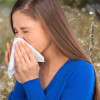

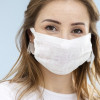
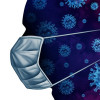

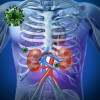
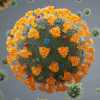
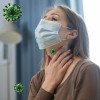

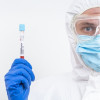
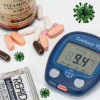


Please login to comment on this article